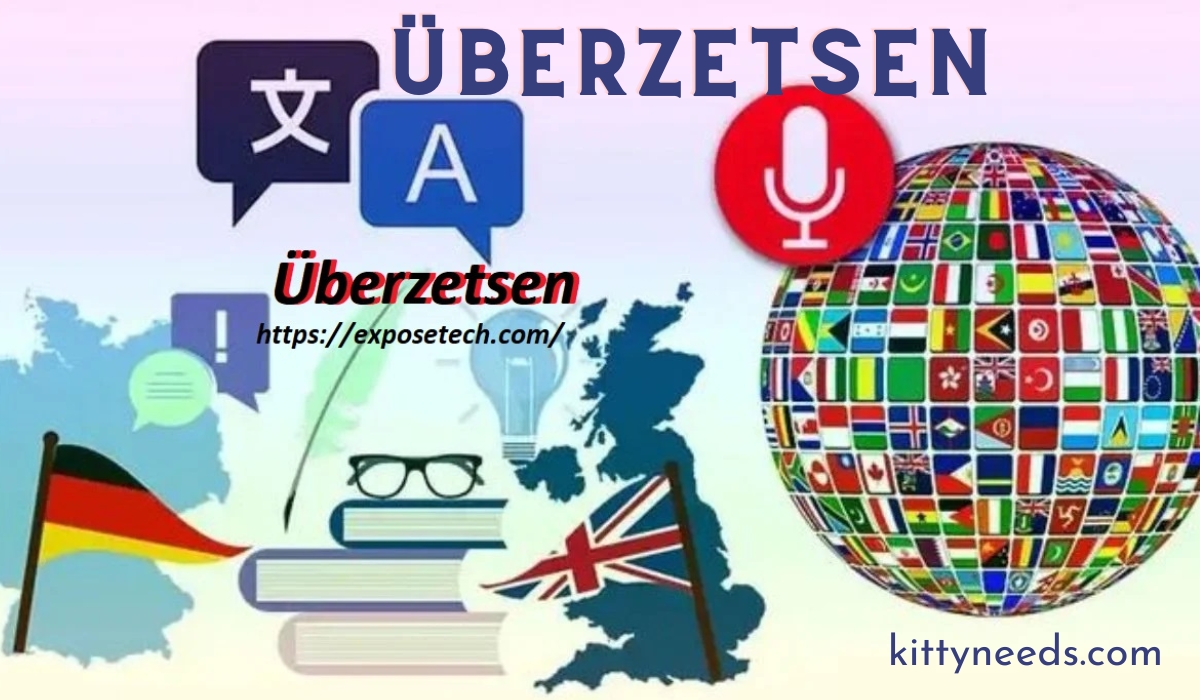Blog
The Importance of Überzetsen: A Comprehensive Guide to Translation Services

In a global village brimming with diverse cultures and languages, effective translations serve as the linguistic bridges that connect us. It is an era defined by unprecedented exponential growth and global enterprises, underlining the necessity for seamless communication across linguistic borders. This vast domain of translation, encapsulated by the term “Übersetzer” in the German lexicon, is not only intrinsic to interaction and commerce but is also a pillar of diplomatic and international relations. This blog post is a comprehensive exploration of Überzetsen and translation services, with a special focus on how technology, exemplified by the ubiquitous Google Translation service, is shaping and redefining the industry.
Understanding Überzetsen
Defining and Appreciating the Role
A Überzetsen is not just a translator; they are custodians of meaning and context. Their work extends beyond converting text from one language to another; it involves careful consideration of nuance, culture, and intent. To be an effective translator, one must possess not only a deep understanding of multiple languages but also a profound awareness of the subtleties that distinguish one from another.
Navigating Through the Pitfalls of Translation
Accurate translation hinges on two critical factors: fidelity to the source material and relevance to the intended audience. A word that means “home” in one language might invoke the concept of “hearth and warmth” and “smart refrigerators” in another. The wonderfully complex facet of language means translations are vulnerable to loss or distortion of vital contextual information, hence the paramount importance of a skilled Überzetsen.
The Plurality of Translation Services
The spectrum of translation services is broad and diverse, with each category serving specific needs. Professional translation services, machine translation, interpretation, transcreation, and localization are just a few examples.
Each service type addresses a different requirement, be it the accurate portrayal of technical jargon in a legal document or the culturally attuned messaging of a global marketing campaign.
Exploring the Google Translation Service
A Giant in the World of Translation
Google Translate has emerged as a household name across the language barriers, revolutionizing how we approach communication. Its rise to prominence is underpinned by its accessibility, allowing users instant translations at their fingertips.
Unpacking Google Translate’s Capabilities
Utilizing a combination of statistical and neural machine translation, Google Translate boasts an extensive database and sophisticated algorithms. It can handle complex sentence structures and provide relatively accurate translations, often in real-time.
Understanding the Mechanics
The operation of Google Translation is a remarkable blend of linguistics and technology. It starts with ‘tokenization’—breaking down the text into smaller segments—before utilizing statistical models to match these segments with pre-existing translations, and finally, using proprietary neural networks to optimize and refine the output.
The Pros and Cons of Digital Translation
While it’s a boon for quick and casual translations, Google Translate is not without its limitations. It struggles with context and idiomatic expressions, often resulting in literal translations that may not make sense or could be misleading.
Use Cases of Übersetzer and Translation Services
The Corporate Connection
In the business world, translation services facilitate numerous critical operations. From translating legal documents and business contracts to ensuring clear multi-lingual communication within global teams, the role is indispensable.
In the Academic Arena
Translation plays a pivotal role in advancing academic research and facilitating intellectual exchange. It enables scholars to share their work globally and ensures the dissemination of knowledge in a universal language.
Navigating the Globe with Ease
In tourism and travel, effective translation is more than a service; it’s a passport to a richer experience. It allows for clear communication, a deeper understanding of local customs, and can enhance the enjoyment of cultural immersion.
The Legal and Medical Lens
Legal translation services are crucial in global legal proceedings, whereas medical translations save lives by ensuring accurate communication during treatment or for patient information.
Best Practices for Übersetzer and Users of Translation Services
The Layered Landscape of Language
Cultural context is as significant as any other linguistic factor in translation. Understanding idioms, socio-political considerations, religious connotations, and the specific cultural landscape of the source and target languages is key to delivering nuanced and impactful translations.
Quality Over Speed
In the translation industry, as in life, quality trumps quantity. A good Überzetsen knows the importance of taking the time to produce a high-quality translation free from errors and inconsistencies.
Ethical Dimensions of Translation
With great power comes great responsibility, and this adage holds true for translations in sensitive domains. Ethical considerations, such as maintaining confidentiality, avoiding biased translations, and respecting the original tone, are critical.
Making the Most of Technology Without Compromising Integrity
While machine translation can offer assistance, it should not replace human translators altogether. The expertise of a professional is invaluable in ensuring the accuracy and appropriateness of a translation.
Challenges and Future Trends in Translation Services
The Technological Tug-of-War
Technology is rapidly advancing, presenting both opportunities and challenges for translation services. Automated translation systems continue to improve, leading to an ongoing debate about the role of Überzetsen in the future.
The Human vs. Machine Debate
While machines excel at volume and speed, human translators possess the understanding of nuances and cultural contexts that machines may never fully grasp. The conundrum of quality versus efficiency persists.
Ensuring Privacy in a Digitally-connected World
With the interconnectedness of the digital world, the issue of data privacy becomes increasingly salient. Translation services must evolve to guarantee the security of sensitive information.
The Rising Tides of Artificial Intelligence
Artificial intelligence is the harbinger of a new age of translation services. With powerful neural networks, AI promises to provide increasingly accurate translations, and its implications for the industry are profound.
YOU MAY ALSO LIKE
Geekzilla Radio: Exploring the Nexus of Geek Culture
Conclusion
In conclusion, the role of Überzetsen and the provision of translation services are as vital as they are complex. It is a world where technology serves not to supplant but to complement human capabilities, ushering in new horizons of connectivity and understanding. This guide has provided an in-depth look into the importance of translation, navigating through the landscape of defining expertise, understanding tools that power modern translations, and the ongoing challenges and future trends in the industry.
In a rapidly evolving global environment, the ongoing quest for effective translation remains unceasing. We must continually strive to blend the art of language with the science of technology, all the while being stewards of trust, accuracy, and cultural understanding.
The ultimate testament to Überzetsen and their craft is not just in the words they translate but in the harmony and communion they facilitate among the languages and peoples of the world.
FAQs
- What is the difference between an Übersetzer and a translator?
- An “Überzetsen” is the German word for “translator.” Essentially, there is no difference as both refer to a professional who converts information from one language to another, ensuring that the translation preserves the original message’s meaning and context.
- Can Google Translate replace professional translators?
- While Google Translate and similar automated translation services are improving, they cannot fully replace professional translators. Human translators offer an understanding of cultural nuances, idioms, and context that machines currently cannot match, especially in complex, nuanced, or sensitive texts.
- Why is cultural context important in translation?
- Cultural context is crucial because language is not just words or syntax; it reflects a community’s values, practices, and worldview. Understanding the cultural background of both the source and target languages ensures translations are not only accurate but also appropriate and respectful to both parties.
- How does artificial intelligence impact the future of translation services?
- Artificial intelligence is significantly advancing the capabilities of automated translation, making services faster and more accurate. However, the future promises a collaborative relationship where AI supports human translators, enhancing efficiency without compromising the depth of cultural and contextual understanding.
- What are the best practices for ensuring privacy in translation services?
- To ensure privacy, it’s vital to work with reputable translation services that adhere to strict confidentiality agreements. Technological safeguards, such as encrypted communications and secure file transfer protocols, alongside rigorous data protection policies, play critical roles in protecting sensitive information in translation processes.

-

 Pets and Animals4 months ago
Pets and Animals4 months agoShovel Dog: Everything You Need to Know
-

 Pets and Animals4 months ago
Pets and Animals4 months agoHow To Trim Dog Nails: A Step-by-Step Guide for Painless Pups and Peace of Mind
-

 Pets and Animals4 months ago
Pets and Animals4 months agoBubonic Plague case oregon cat: A Modern Tale of Medieval Disease
-

 Pets and Animals4 months ago
Pets and Animals4 months agoBlack Beauty: Unveiling the Alluring Pitbull Dog Black
-

 Pet Care Guides4 months ago
Pet Care Guides4 months agoHere’s Why Nationwide Pet Insurance Should Be on Your Radar
-

 Pets and Animals4 months ago
Pets and Animals4 months agoHow Often Do You Take A Cat to the Vet? A Guide for Caring Owners
-

 Other4 months ago
Other4 months agoHow to Hello kitty drawing: A Step-by-Step Guide for Fans of All Ages
-

 Pet Care Guides4 months ago
Pet Care Guides4 months agoGive a Loving Home: Adopt a Pet, Change a Life with Pet finder